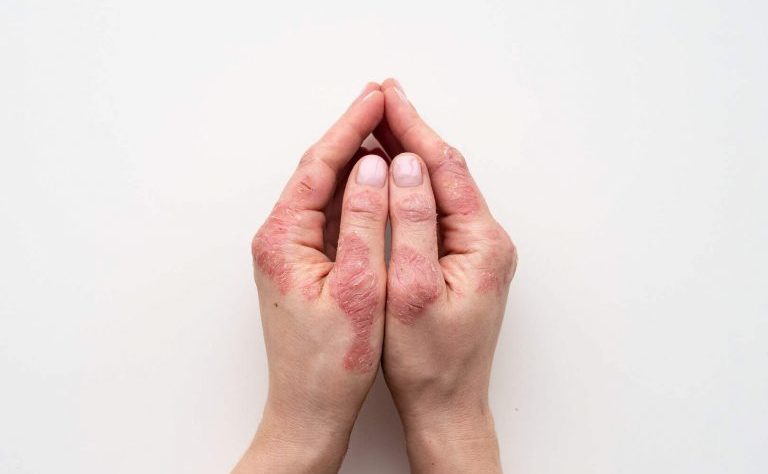Leprosy or leprosy is a chronic bacterial infection that attacks the skin, peripheral nerves, and respiratory tract. Leprosy or leprosy is also known as Hansen’s disease or Morbus Hansen’s.
Leprosy or leprosy can be characterized by weakness or numbness in the legs and feet, followed by the appearance of skin lesions. Leprosy or leprosy is caused by a bacterial infection that can be spread through splashes of saliva or phlegm that come out when coughing or sneezing.
Then, what are the symptoms or characteristics of leprosy to watch out for?
1. The appearance of patches on the skin
One of the characteristics that will be seen is the appearance of patches on the skin. These patches can appear in different shapes and colors, depending on the type of leprosy.
This disease is actually divided into two types, namely bacillary (PB) and multi-bacillary (MB).
In bacillary pauses, the prominent feature is white patches. Whereas in multi-bacillary disease, the spots that appear are reddish and accompanied by thickening of the skin.
The appearance of white patches in PB leprosy is often ignored and is often considered a skin disease. In fact, there are differences between the two.
If a person has tinea versicolor, then he will feel itchy and a reddish color appears on the edge of the spot. While the white patches on leprosy do not itch, but instead numb.
2. Reduced function of the sense of touch
The nervous system that is attacked can cause a person who has this disease to feel numb (numbness). These symptoms can occur gradually, initially will make you feel less (hypesthesia) or numb at all.
This is what makes people with leprosy have disabilities. Because if left unchecked, these damaged nerves will not feel pain even if their finger is cut off.
If leprosy attacks the nervous system, then loss of taste sensation including pain can occur. This can cause wounds or injuries in the hands or feet not to be felt by the sufferer, as a result, symptoms of the loss of fingers or toes can appear.
Based on the severity of symptoms, leprosy is grouped into 6 types, namely:
• Intermediate leprosy, characterized by several flat lesions that are pale or lighter in color than the surrounding skin color which sometimes heal on their own
• Tuberculoid leprosy, characterized by several flat lesions that are sometimes large, numb, and accompanied by nerve enlargement
• Borderline tuberculoid leprosy, characterized by the appearance of lesions that are smaller and more numerous than tuberculoid leprosy
• Mid-borderline leprosy, characterized by many reddish lesions, which are scattered randomly and asymmetrically, numbness, and local swelling of lymph nodes
• Borderline lepromatous leprosy, characterized by numerous lesions that can be flat, lumps, nodules, and sometimes numbness
• Lepromatous leprosy, characterized by symmetrically scattered lesions, generally the lesions that arise contain lots of bacteria, and are accompanied by hair loss, nerve disorders, and weakness of the limbs
When to go to the doctor
If you suffer from leprosy symptoms as described above, immediately consult a doctor. In addition, consult a doctor if you have risk factors for developing leprosy. The sooner leprosy is treated, the higher the chance of healing.
Leprosy Diagnosis
To diagnose leprosy or leprosy, the doctor will ask the symptoms you feel, then examine the patient’s skin. The doctor will check whether there are lesions on the skin as a symptom of leprosy or not. Leprosy lesions on the skin are usually pale or red (hypopigmentation) and numb.
To determine whether the patient has leprosy, the doctor will take a skin sample by means of scraping (skin smear). This skin sample will then be analyzed in the laboratory to check for the presence of the bacterium Mycobacterium leprae.
In areas where leprosy is endemic, a person can be diagnosed with leprosy even though skin scrapings are negative. This refers to the classification of the world health agency or the World Health Organization (WHO) on leprosy, namely:
• Paucibacillary, ie there are skin lesions even though the results of skin scrapings (smears) are negative
• Multibacillary, ie there are skin lesions with a positive skin scraping test (smear)
If the leprosy suffered is severe enough, the doctor will likely perform supporting tests to check whether the bacteria Mycobacterium leprae has spread to other organs or not. An example of a check is:
• Complete blood count
• Liver or liver function tests
• Creatinine test
• Nerve biopsy
How is leprosy treated?
People diagnosed with this disease will usually be given a combination of antibiotics as a treatment step for six months to two years. Leprosy treatment itself must be based on the type of leprosy to determine the type, dose of antibiotics, and duration of treatment.
Surgery It is generally performed as a follow-up process after antibiotic treatment. The goals of surgical procedures for leprosy patients are:
• normalizes the function of damaged nerves,
• improve the body shape of the disabled, and
• restore limb function.
The risk of complications of leprosy can occur depending on how quickly the disease is diagnosed and effectively treated. Some complications that may occur if leprosy is treated too late are:
• permanent nerve damage,
• weakened muscles, as well as
• progressive defects, such as loss of eyebrows, defects in the toes, hands and nose.
In order not to cause these complications, it’s a good idea to immediately go to a dermatologist if you start to feel some of the symptoms above. Don’t hesitate to ask if there are certain symptoms that concern you.
The need for digital IT is needed in daily activities, Bead IT Consultant is the right choice as your partner, visit our website by clicking this link: www.beadgroup.com

